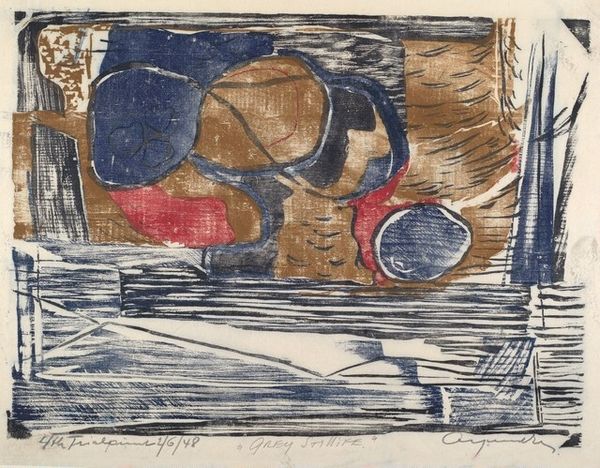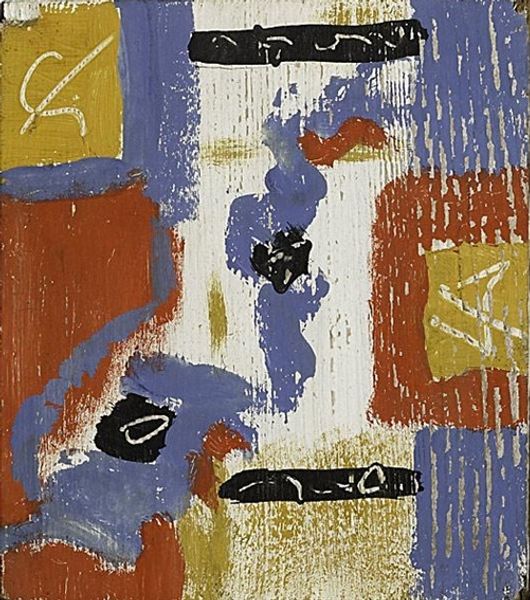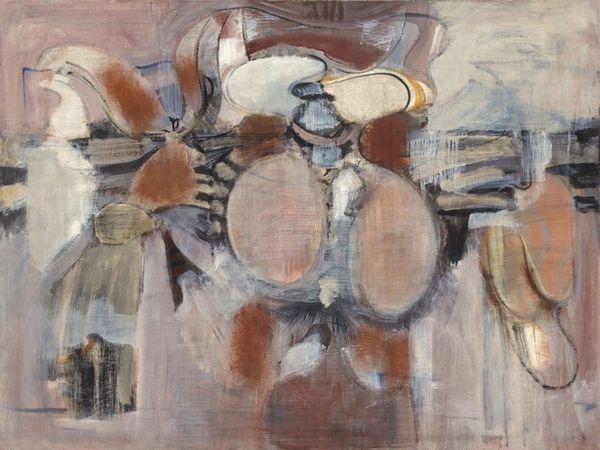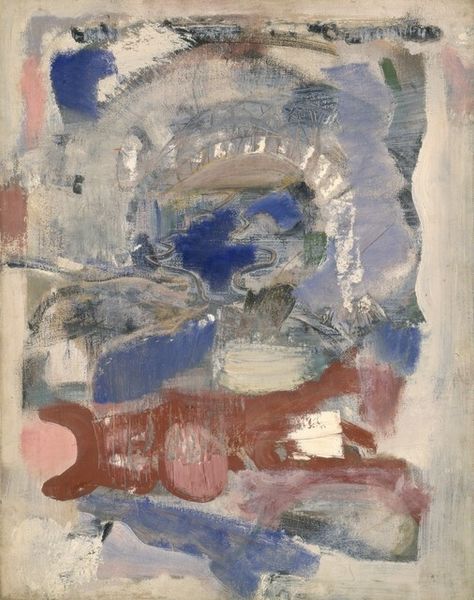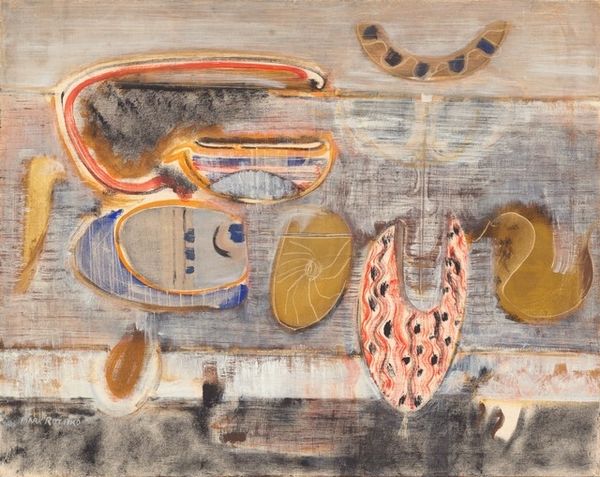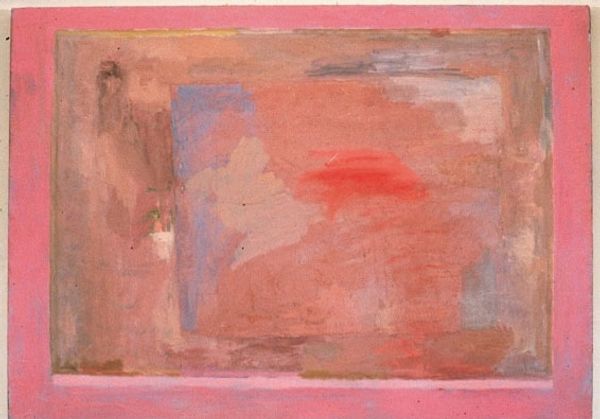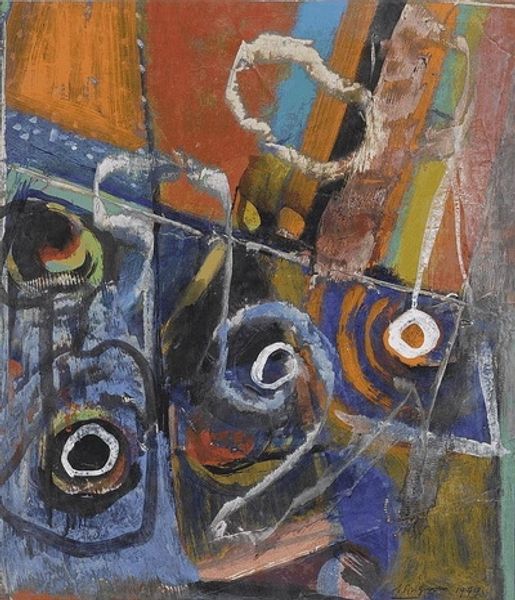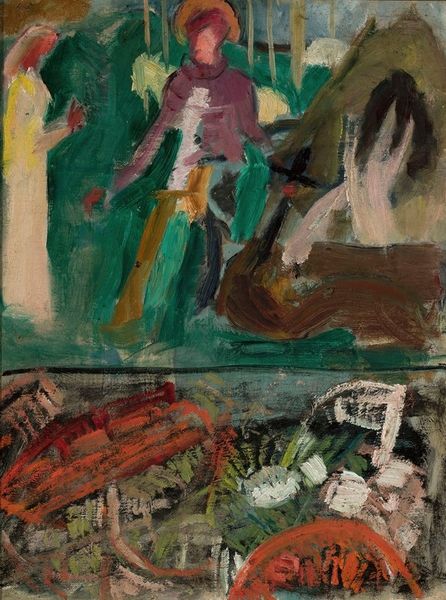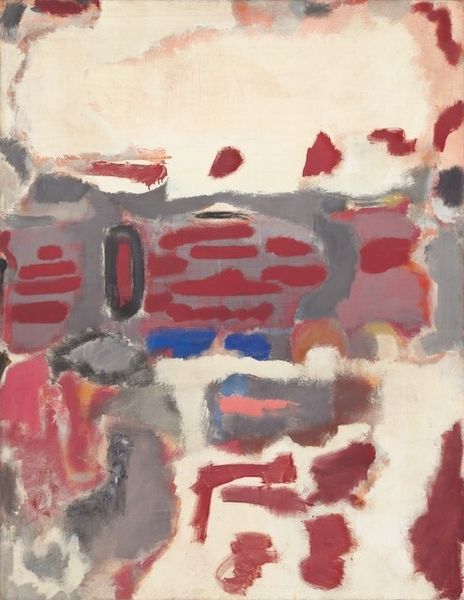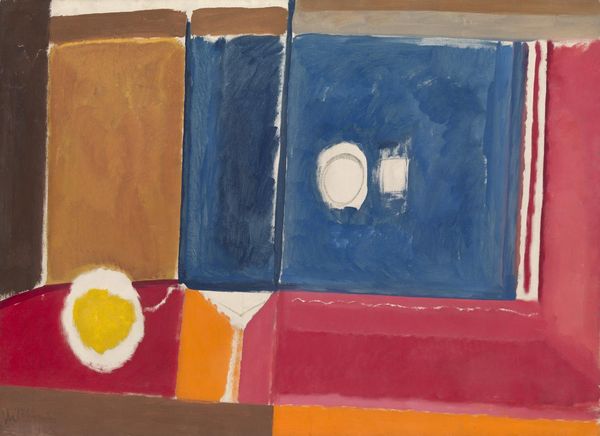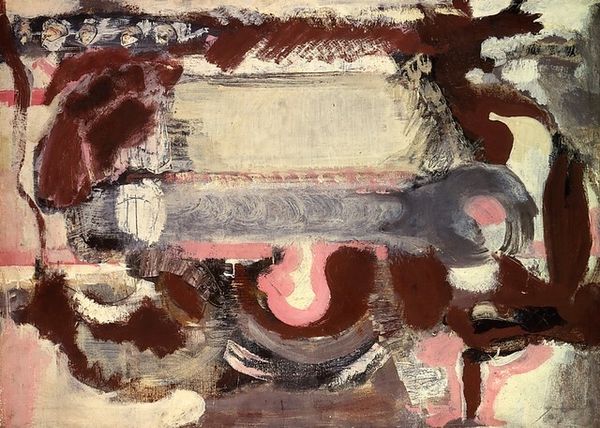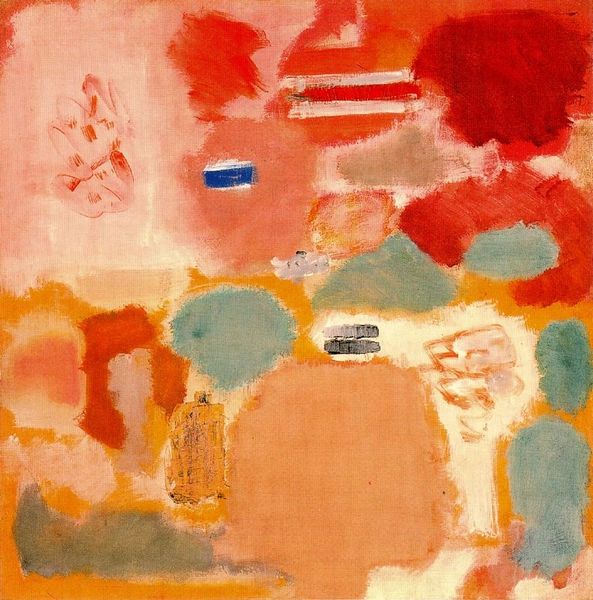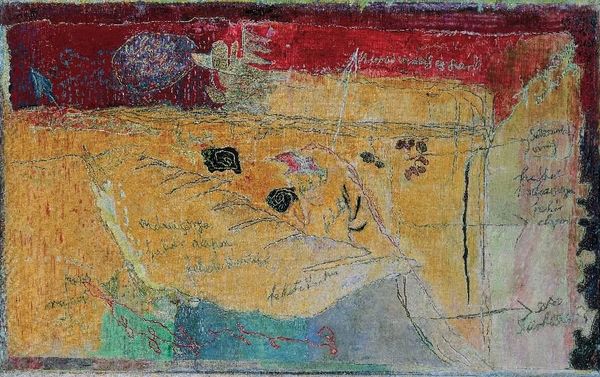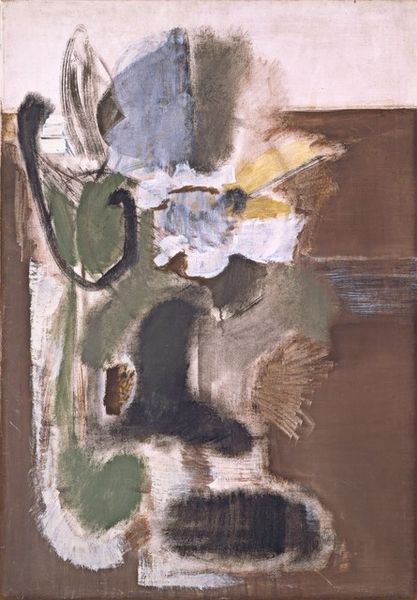
painting, oil-paint
#
abstract painting
#
painting
#
oil-paint
#
oil painting
#
abstraction
#
modernism
Dimensions: overall: 70.2 x 91.4 cm (27 5/8 x 36 in.)
Copyright: National Gallery of Art: CC0 1.0
Curator: Stepping in front of this piece, what sensations rise up in you? I find myself thinking of ancient murals, like something discovered in a forgotten tomb, fading before my eyes. Editor: Yes! There’s an undeniable sense of the archaic—like echoes of forms barely clinging to existence. Allow me to introduce Rothko's "Untitled," an oil painting from 1946. Look closely. Here we see very clearly his move toward abstraction. Curator: And away from figuration! I see barely perceptible bodies huddled there on that tan-colored ground, as if yearning for expression and not quite making it. I'm immediately captivated by the color palette, very toned down, humble. Is this what it means to be Modern? Editor: Rothko masterfully manipulates color and form to explore profound themes—human emotion, spirituality, tragedy. In this "Untitled", notice the composition. The subdued color field seems divided, segmented vertically into three very subtle and ghostlike masses that might suggest vestigial figures. The Formalist argument suggests he is beginning to pull away the elements that allow a figure to be depicted. Curator: Interesting, like half-remembered ghosts! There's the red core pulsing softly, framed by this loose, incomplete contour. That is not only clever, but also a statement. He wanted us to dive in emotionally without spelling it all out. But look how simple the materials are! Nothing shouting out its grand importance—instead just whispering. Editor: It's precisely that subtlety, born from the basic materiality of oil on canvas, which elevates it. The piece embodies Modernism’s fascination with surface, edge, and pure visual sensation while wrestling, via composition, with enduring questions about human relationships, or our own tenuous place in the cosmos. Rothko has captured a sense of poignant impermanence. Curator: Absolutely. It has struck me. To view "Untitled" is to become keenly aware of the delicate dance between revelation and erasure. It asks us to witness the fading—the melancholic beauty of loss, or perhaps just an elegy for moments that pass and can never be regained. Editor: Quite so. Whether through brushstroke, color choice, or scale, each artistic decision shapes our encounter. That's why slowing down to consider the how as well as the what is vital for engaging meaningfully. What's your last feeling about the piece, before we move on?
Comments
No comments
Be the first to comment and join the conversation on the ultimate creative platform.
